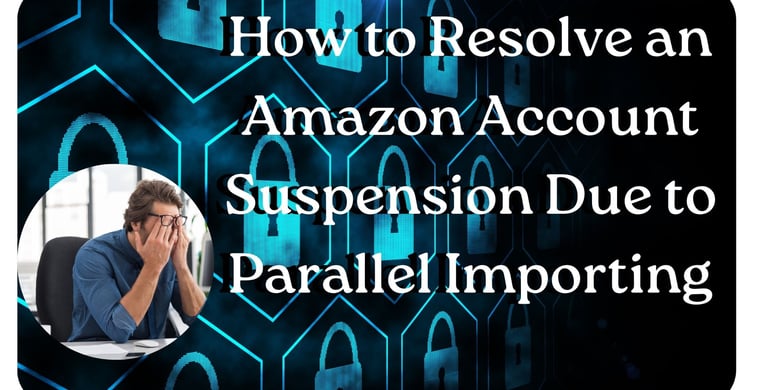How to Resolve an Amazon Account Suspension Due to Parallel Importing
Learn what parallel importing on Amazon is, why it can lead to account suspensions, and how to fix it with an effective action plan. Avoid future violations.
ACCOUNT LOCK


Amazon is one of the most stringent e-commerce platforms when it comes to intellectual property compliance. One of the most common issues sellers face is account suspension due to parallel importing. In this article, we will explore what parallel importing is, why it can lead to account suspensions, how to resolve such issues, and best practices to avoid future violations.
What is Parallel Importing on Amazon?
Parallel importing refers to purchasing and selling branded products without the explicit authorization of the rights holder in a specific region. This means a seller acquires products in a country where prices are lower and sells them in another region without the brand owner’s approval.
Amazon enforces strict rules to protect brand owners and prevent the sale of products that may infringe distribution or intellectual property rights in certain markets.
Why Does Amazon Suspend Accounts for Parallel Importing?
Amazon may suspend an account for the following reasons:
The seller lists a branded product without authorization from the rights holder in that region.
The brand owner files a formal complaint alleging a distribution or intellectual property rights violation.
The seller fails to provide invoices from authorized distributors or a letter of authorization from the brand owner.
How to Identify if You Are at Risk of Suspension
If you are selling branded products in a different market, check the following points:
Read Amazon’s intellectual property policies regarding parallel importing.
Verify whether the brand has sales restrictions in the region where you intend to sell.
Request authorization from the brand before listing the product.
Always purchase from official distributors and keep original invoices.
How to Resolve an Amazon Account Suspension Due to Parallel Importing
If Amazon has already suspended your account or sent you an infringement notice, follow these steps:
1. Analyze Amazon’s Notification
Identify the affected ASIN and review the exact reason for the suspension.
Log in to Seller Central to check the complaint details and infringement identifier.
2. Remove the Product Listing
As an immediate measure, take down the infringing product listing to show Amazon that you take the issue seriously.
3. Prepare a Plan of Action (POA)
Amazon requires a clear and detailed action plan to evaluate the possibility of reinstatement. A strong POA should include:
Explanation of the issue: Acknowledge the mistake and mention the unawareness of the restriction.
Corrective actions: Describe the measures taken, such as removing the listing and contacting the brand for authorization.
Preventive actions: Explain how you will prevent future violations, such as regularly reviewing Amazon’s intellectual property policies and obtaining permissions before listing products.
4. Submit Supporting Evidence to Amazon
If you have invoices from authorized distributors or a brand authorization letter, include them in your appeal.
5. Consult a Lawyer if Necessary
If the case is complex, consider hiring an intellectual property specialist to assist with the appeal.
How to Avoid Future Violations
To prevent future account suspensions, follow these recommendations:
Request brand authorization letters before selling products that may be restricted.
Keep invoices from authorized distributors and verify their validity before making large-scale purchases.
Regularly review Amazon’s intellectual property policies to stay updated on potential changes.
Use Amazon’s Seller University to stay informed about best practices and regulations.
Conclusion
Account suspension due to parallel importing is a serious issue that can affect sales and a seller’s reputation on Amazon. However, with a proper strategy and a well-prepared action plan, it is possible to recover the account and prevent future suspensions. The key is understanding Amazon’s policies, maintaining open communication with brands, and operating transparently in all business transactions.
